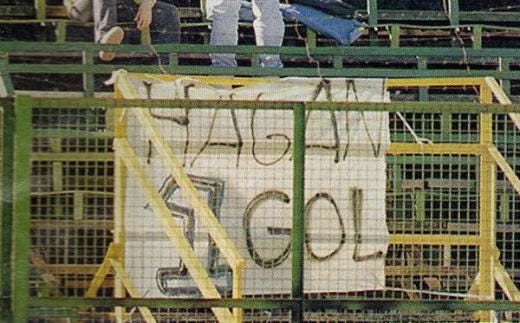Goals Are Love
I have used the Ford Pinto before as an analogy to describe bad designs, and the analogy keeps on giving. So I will just continue milking it and use the poor Pinto to illustrate one more strange practice around engineering: the overrated (or bad) use of goals.
In the late 1960s, the Ford Motor Company was losing market share to foreign competitors that were selling small, more fuel-efficient cars. Then-CEO Lee Iacocca announced a specific, challenging goal: producing a new car that would be “under 2000 pounds and under $2,000” and would be available for purchase in 1970. This goal, coupled with an unrealistic deadline, kicked off a known pattern: start overlooking things in order to obsessively meet the goal that’s been set. For the Pinto, it meant that many levels of management signed off on unperformed design rules checks to expedite the development of the car1. One omitted aspect concerned the fuel tank, which was located behind the real axle in less than 25 centimeters of crush space, way closer than what most designs of the time used. The rest is history.
There are several problems with goal setting:
In multidisciplinary design endeavors, goals cannot be isolatedly defined at the lowest levels of the hierarchy of the system of interest. They must all align with the life cycle of it. Example: if you are developing an airliner, you cannot assign goals to the software team that only concerns that team and some other goals to, say, the wiring team that only concerns them, and expect that it will go well. What ultimately matters is how the airliner—the system—will mature from design stage to design stage, so better set the goals “systemically”. Equivalently, unnecessary granularity is a big problem of our times, and that also affects goal setting. Goals might read and sound coarse as long as they conveniently capture the work of relevant domains into a single, meaningful set point.
As projects mature, everything tends to change. Unexpected problems appear, shit tends to happen. Goals cannot stay fixed as everything else is moving. The flipside is: if goals change too much, the team might interpret that management is winging it. Goal setting makes the relationship between management and workers very tense, if any extra tension was needed there.
Goals might create tunnel-vision and inattentional blindness: In a well-known experiment, Simons and Chabris studied this effect2 by asking participants to watch a video in which two groups of players pass basketballs. One group wears white shirts; the other group wears dark shirts. Given the task of counting basketball passes among people wearing only white shirts, people unconsciously block out the black shirted individuals. As a result of this narrow focus, most participants fail to notice when a person wearing a black gorilla suit saunters into the middle of the screen, pounds his chest, and walks off screen3. Intense concentration on the counting task causes people to overlook a striking element of their visual world.
Goal setting and tracking eventually becomes a full time job no one wants to do. Goals start to rot, and as soon as the team perceives the decay, goals stop serving the purpose: no one cares anymore.
Ironically, goals are not ends, but markers or waypoints. A larger picture, or guidance “law”, must connect the waypoints together to arrive at the destination.
There is a lot of boring bibliography written about goal setting, with a new way to skin the cat—call it OKRs, MBO, or what have you—appearing every half decade or so, with the subsequent multitude of 350-pages books thrown into the shelves. Books that will all basically parrot the same, preaching on how goals should be measurable, attainable, relevant, specific. Besides the babble, goals must be always connected to reality and, more fundamentally, adaptive.
On the 28th of March, 1999, a match took place in the second division of argentinian football between Ferrocarril Oeste and Belgrano de Córdoba. It was a match of struggling teams: both were fighting to avoid relegation to the third division, so there was a lot at stake. Ferrocarril Oeste had not scored a single goal in the tournament so far, and that’s when the supporters of Ferro fielded a flag containing a request—which has ever since become mythical— so clear, concise, realistic, measurable, encouraging; hell, so SMART, that it would be the envy of many MBAs out there:
Score 1 goal
https://www.hbs.edu/ris/Publication%20Files/09-083.pdf
https://journals.sagepub.com/doi/abs/10.1068/p281059
You should definitely try this video with a relative or friend. I totally missed the gorilla when they showed it to me ages ago.

